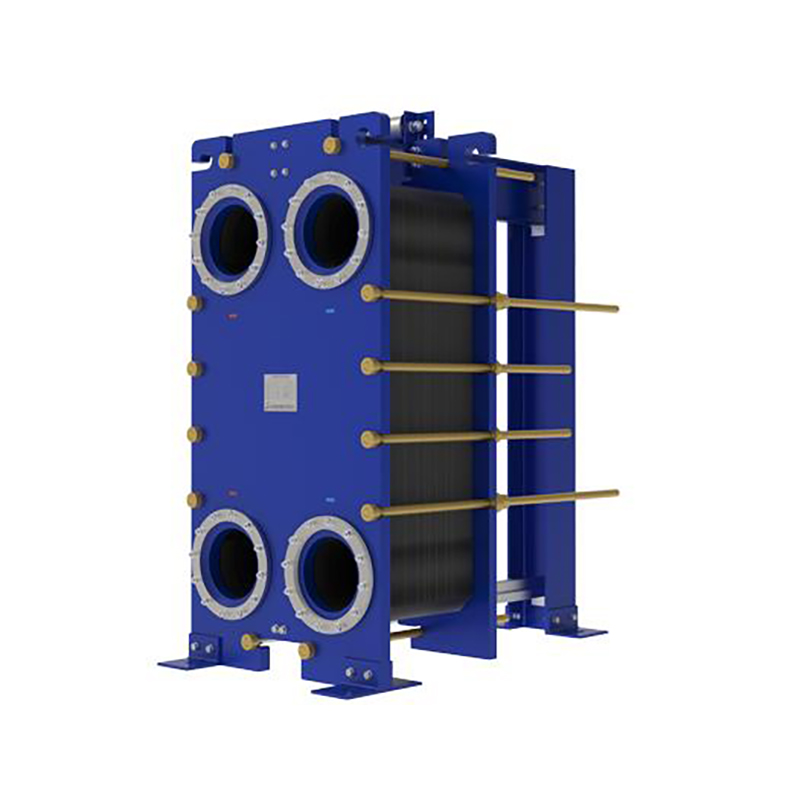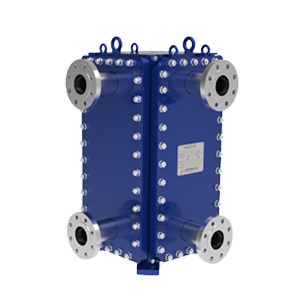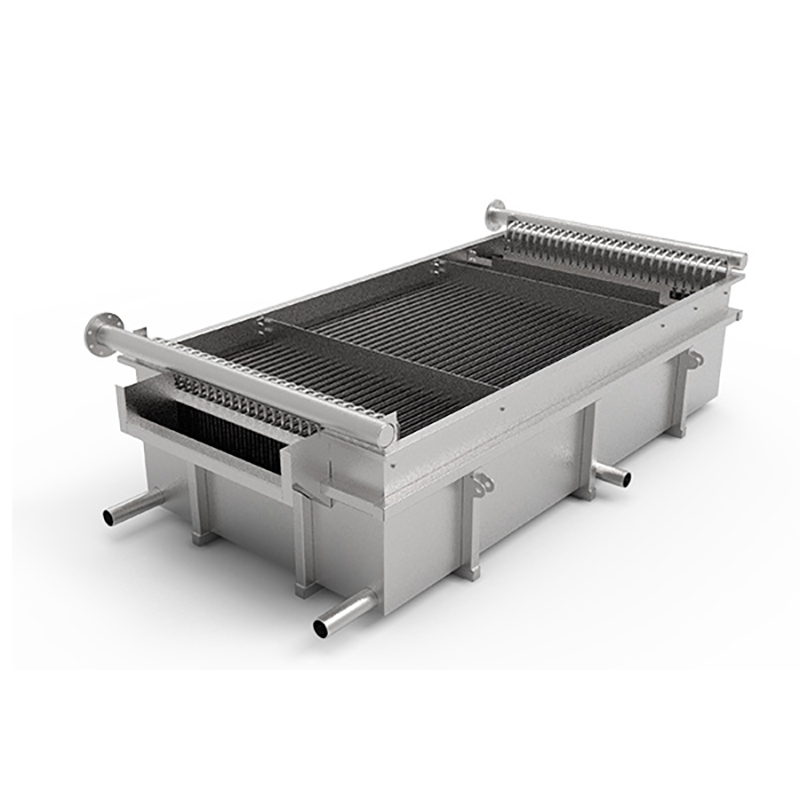5 key roles of plate heat exchanger gaskets.
Plate heat exchanger gaskets perform 5 key roles: ...
More
A Printed Circuit Heat Exchanger (PCHE) is a highly compact and efficient type of heat exchanger manufactured using a specialized hybrid process that combines photochemical etching and diffusion bonding. The core technology involves chemically etching intricate, semi-circular fluid flow channels into thin metal plates, typically made from high-grade stainless steel, nickel alloys, or other corrosion-resistant materials. These etched plates, which resemble electronic printed circuit boards, are then meticulously stacked in an alternating pattern to create the desired flow arrangement (counter-current, cross-flow, etc.). The entire stack is placed in a vacuum furnace and subjected to extreme heat and pressure, a process known as diffusion bonding, which fuses the plates together into a single, solid, and incredibly strong block with no internal welds or braze joints. This results in a core that contains the precise, complex network of channels for the two fluids to exchange heat without ever mixing. PCHEs are engineered to perform exceptionally well under high pressures and temperatures, making them a cornerstone technology for demanding industrial applications where space, weight, and performance are critical factors. Their unique design offers a significantly higher surface area to volume ratio compared to traditional shell-and-tube or plate-type heat exchangers.
The operational principle of the Printed Circuit Heat Exchanger is fundamentally based on achieving maximum thermal efficiency in a minimal footprint. The photochemical etching process allows for unparalleled design flexibility, enabling engineers to create optimized channel patterns—such as zig-zag, straight, or customized geometries—tailored to specific fluid properties, pressure drop requirements, and thermal duties. This precision engineering facilitates true counter-current flow, which is the most efficient flow arrangement for heat transfer, allowing for temperature approaches as tight as 1-3°C. The diffusion bonding process is what gives the PCHE its remarkable integrity. By creating a monolithic metal structure, it eliminates the failure points common in other exchangers, such as gaskets, seals, or braze joints. This makes the unit capable of handling extreme conditions; for instance, PCHEs routinely operate at pressures exceeding 600 bar (8,700 psi) and temperatures ranging from cryogenic levels up to 900°C (1,650°F). The materials of construction are selected based on the application, with common choices including 316L stainless steel for general corrosion resistance, Alloy 625 for high chloride environments, and titanium for seawater cooling. The combination of these advanced manufacturing techniques results in a device that delivers superior heat transfer coefficients, often 3 to 5 times higher than those of conventional heat exchangers of a comparable size, enabling massive reductions in equipment volume and weight, sometimes by over 85%.
The advantages of the Printed Circuit Heat Exchanger are extensive and transformative for industries pushing the limits of efficiency and compactness. Its most lauded benefit is its exceptional compactness and high surface area density, which directly translates to a massive reduction in footprint and weight. This is a critical advantage for offshore platforms where space is at a premium or for aerospace applications where every kilogram saved is crucial. Secondly, its ability to operate at very high pressures and temperatures safely and reliably is a game-changer for processes like supercritical CO2 (sCO2) power cycles and high-pressure gas processing. The diffusion-bonded construction provides unparalleled structural integrity and leak-proof performance, vastly increasing operational safety by completely eliminating the risk of internal leakage between fluid streams. Furthermore, the flexibility in channel design allows for precise optimization of thermal performance and pressure drop, ensuring the unit is perfectly matched to the process requirements, which maximizes energy efficiency and minimizes operational costs. The robustness of the design also leads to exceptional durability and a long operational lifespan, even when handling corrosive or aggressive media, due to the appropriate selection of high-performance alloys. This combination of features makes the PCHE not just a heat exchanger, but a key enabling technology for next-generation energy systems.
The quantifiable benefits of PCHEs are well-documented across various sectors. In the Liquefied Natural Gas (LNG) industry, PCHEs are used as main cryogenic heat exchangers, achieving thermal effectiveness rates of over 90% while reducing the size of the core unit by more than 80% compared to traditional wound coil designs. This compactness directly reduces the structural support needed and the overall plot space of an LNG train. In the emerging field of supercritical CO2 power cycles, which promise significantly higher thermal efficiencies for power generation, PCHEs are the only viable technology capable of functioning as recuperators and pre-coolers at the required simultaneous high temperatures (over 700°C) and extreme pressures (250+ bar). Their efficiency in these cycles is critical for achieving the target cycle efficiencies of 50% or greater. For offshore oil and gas production, PCHEs serve as compact gas coolers and separation reboilers, where their resistance to high pressures and sea-water corrosion (when made from titanium) ensures reliability and minimizes maintenance in inaccessible locations. The durability is evidenced by performance lifespans often exceeding 30 years without requiring replacement. From a operational standpoint, the high thermal efficiency reduces the required flow rates or log mean temperature difference (LMTD), leading to substantial energy savings and lower carbon emissions over the plant's lifetime, providing a compelling return on investment despite a higher initial capital outlay.
Select the most popular foreign trade service products to meet your diverse needs
Learn more about the dynamics and professional knowledge of the foreign trade industry

Plate heat exchanger gaskets perform 5 key roles: ...
More
A gasket in heat exchanger seals surfaces, blocks ...
MoreAPI 662 defines standards for plate heat exchanger...
More
You can see clear differences between welded block...
More
The dimple plate heat exchanger, also known as the...
More
Plate heat exchangers are becoming more popular be...
MoreSelect the most popular foreign trade service products to meet your diverse needs
Explore more content related to foreign trade services

User Comments
Service Experience Sharing from Real Customers
Michael Chen
Thermal Systems EngineerThe compact design and exceptional thermal efficiency of this printed circuit heat exchanger have been a game-changer for our high-pressure reactor cooling system. It outperforms traditional shell-and-tube designs by a significant margin.
Sarah Johnson
Lead R&D SpecialistWe integrated this PCHE into our supercritical CO2 power cycle prototype. The performance is outstanding, with minimal pressure drop and incredible durability under extreme temperatures and pressures. Highly recommended for advanced energy systems.
David Williams
Plant ManagerExtremely robust construction. It has handled our corrosive process streams remarkably well with no signs of degradation after 12 months of continuous operation. The initial investment is high, but the longevity and zero maintenance justify it.
Emily Rodriguez
Aerospace Propulsion EngineerThe weight savings and unparalleled heat transfer density were critical for our compact aircraft system. The manufacturing quality is impeccable, and it performed flawlessly in all our rigorous tests. A superior product.